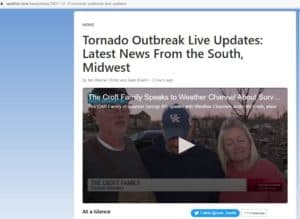Homeowner’s insurance and roof repair: your questions answered.
Your roof is your home’s first line of defense against the elements. It shades you from the sun and shelters you from rain. However, its prominent position means that it is exposed to the elements and at risk of damage from high winds, hail, falling tree branches, and more. The good news is that many types of roof damage are covered by homeowners insurance, saving you from having to pay for the entire repair out of pocket!
This article will break down what sort of damage is and is not covered by homeowners insurance, as well as answer some common questions people have about filing claims. If a recent storm damaged your house and your roof needs to be repaired, you should read this article first!
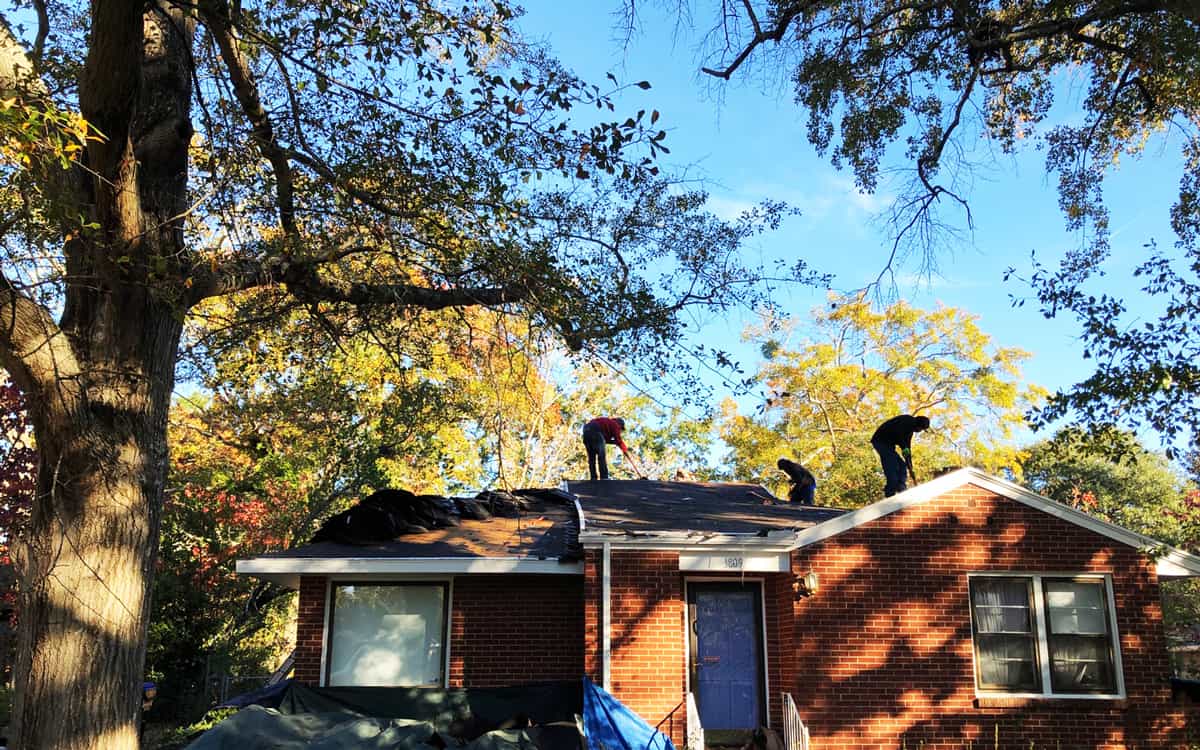
Will homeowners insurance cover my roof damage repair?
Whether or not your homeowners insurance will cover your roof damage depends in large part on how your coverage is worded. However, your insurance will generally pay out for weather related damage or sudden acts, and will almost never pay out for improper installation or deferred maintenance.
Types of roof damage that are typically covered
Most homeowners insurance policies cover damage caused by acts of nature and sudden acts. This means that if the damage is the result of high winds caused by a thunderstorm or tornado you can expect to be able to file an insurance claim. Likewise, if a windstorm causes a tree branch (or worse, a fallen tree!) to drop on your roof, it should be covered.
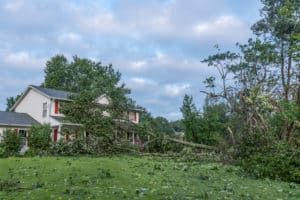
Some types of weather related damage might surprise you: if your roof is damaged by the weight of excessive snowfall, this is generally covered. Similarly, damage caused by hailstorms is also covered. This is particularly important because hail can result in severe damage to asphalt shingles, greatly reducing their lifespan.
Sudden acts include most sorts of accidental damage, including but not limited to damage caused by falling objects, fire, and vandalism.
Types of roof damage that are typically not covered
It is important to be aware of what sort of coverage you shouldn’t expect from your roof insurance. This way you can add these to your policy’s covered perils or take steps to mitigate the risk of them happening in the first place.
Despite the fact that these are acts of nature, earthquakes, floods, and hurricanes are common exclusions to the standard homeowners policy. Adding these risks to your policy can be expensive, but can offer peace of mind if you are in an area with high risk.
Normal aging is never covered by insurance – if your roof has worn out due to old age you should not expect your homeowners insurance claim to be accepted. The same applies to damage caused by a lack of maintenance – if your roof damage stems from a problem that could have been spotted and remedied during a roof inspection you are unfortunately out of luck. This can include everything from water damage caused by clogged gutters to roof leaks brought about by corroded flashing.
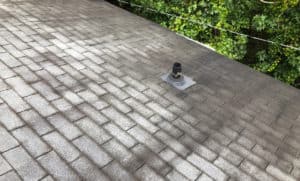
Something to consider when replacing your roof is that roof claims can be rejected if the damage was deemed to be caused by improper installation. While you may be able to save money upfront by hiring the cheapest contractor, this could ultimately prove to be an expensive decision if they cut corners and your future insurance claims are denied.
A common source of roof damage that won’t be covered is any damage caused by an animal infestation; if squirrels or rats have turned your roof into their private palace this is unfortunately not going to be covered by your home insurance policy.
While mold and mildew are not covered under most policies, if the mold results from water damage caused by a covered incident, then your insurance company should pay for the remediation. Mold brought about by leaks caused by age or deferred maintenance will not be covered, so it is important to address roof leaks as soon as you notice them.
The importance of a roof’s age for homeowners insurance claims
One important thing to take into consideration is that many home insurance policies will not cover older roofs. For roofs 20+ years old it is common for insurance companies to require a roof inspection before providing any coverage. Some insurance companies don’t offer full coverage for roofs older than 10 years old, instead only providing coverage for their depreciated value or their actual cash value (ACV).
ACV coverage is generally much cheaper than replacement cash value, but if you find yourself needing a new roof you may be unpleasantly surprised at how low the payout is in comparison to its replacement cost. Keep in mind that your deductible still applies – further reducing the effective insurance coverage. Be sure to read the fine print of your insurance policy to be aware of the age that your insurance company begins to offer diminished coverage.
What factors do homeowners insurance companies take into account when it comes to roof repairs?
When you make an insurance claim your adjuster will take many different factors into consideration. It is important to present them with as much information as possible in order to ensure that your claim is accepted and you receive the maximum reimbursement.
How to Make a Strong Claim
The best way to set yourself up for success when making a homeowners insurance claim is to start the claim process before you have any damage. This doesn’t mean calling up your adjuster during the storm – instead it means you should keep records of your roof installation and maintenance. Ideally take pictures so you have something to present as evidence of what condition your roof was in prior to the incident.
After a storm or incident the first thing you’ll need to do is document the damage. If you feel comfortable scaling a ladder to get pictures of the damage, do so. Otherwise, you can take pictures from the ground, use a drone to get video of the damage, or contact a local, reputable roof contractor and ask them to assess and document the damage.
Beyond documenting the damage, try to get proof of the damaging event. News coverage of tornado touchdowns or severe storms in your area will bolster your claim.
After you make a claim, your insurance company will generally send out an adjuster to assess the damage in person. The adjuster will write up an estimate or statement of work which you’ll be able to present to a roofing company. Something to keep in mind is that adjusters are not roofers and there is a chance that their estimate doesn’t accurately represent the total repair costs.
But never fear, insurance companies are usually willing to accept second or third opinions from qualified roofing companies. If you feel that the estimate is inadequate, find a reputable roofing company to work with and they will help to make sure you get the most out of your coverage.
Watch out for Storm Chasers!
A rule of thumb when it comes to roofers is that good roofers are generally busy. They don’t have time to follow storms around, knocking on dozens of homeowners doors every day soliciting their services. If you are approached by one of these storm-chasing salesmen, be extremely wary.
Oftentimes these traveling roofers will offer discount rates and hard to believe repair times. If it sounds too good to be true it probably is – these cons are generally not licensed or insured and are notorious for shoddy or incomplete service.
Be sure to check a company’s reviews online and work with local, reputable contractors.
Keep your roof maintenance up to date
Keeping your roof maintained is key to getting the most out of your roofing materials and out of your homeowners roof coverage! Insurance companies can deny claims on roofs that were not properly maintained, even if the damage was arguably not directly linked to the maintenance.
It is best practice to have your roof inspected twice per year. This will allow you to catch any problems before they develop as well as provide you with the necessary proof of your roof’s good condition should you need to file an insurance claim
When does Homeowners insurance cover roof replacement?
A full roof replacement is an expensive task and so your homeowners insurance will probably only offer it when the damage to your roof is quite severe.
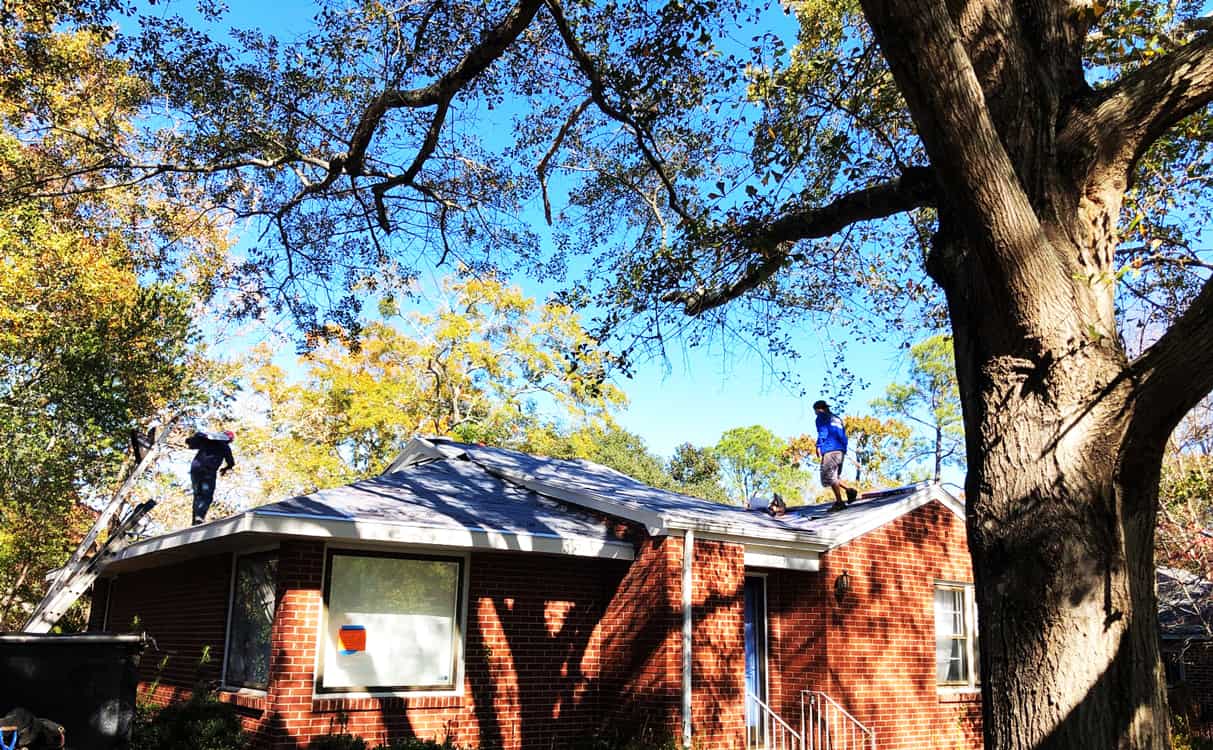
Beyond instances of total loss caused by fire or tornado, most roof damage can be repaired. However, there are a few instances where a damaged roof will be left in basically working order and yet a full replacement will be available.
Hail damage is one common cause of damage that can merit a complete roof replacement. While the damage itself may not be as severe as that which can be caused by a fallen tree branch, the widespread nature of the damage can mean that the lifespan of your entire roof is vastly reduced. Often the only, and best, solution is a complete roof replacement.
While uncommon, if it is impossible for the repair materials to match your existing roof then you may be eligible for a complete roof replacement even if the damage is only to a small portion of your roof.
Your roof covers you, your homeowners insurance covers your roof
If your roof has been damaged by high winds, hail, falling tree branches, fire, or heavy snow then you should file a claim with your homeowners insurance. In general, sudden acts that damage your roof are covered and your insurance company will be able to help you get your roof repaired!
In order to take advantage of this though, you’ll need to keep your roof in good working order. Insurance companies are happy to reject claims on the basis that the roof was neglected and had fallen into disrepair prior to the incident.
Rennison roofing offers roof inspections for South Carolina’s Midlands so that you’ll be able to prove your roof’s condition in the event that something happens to it!
